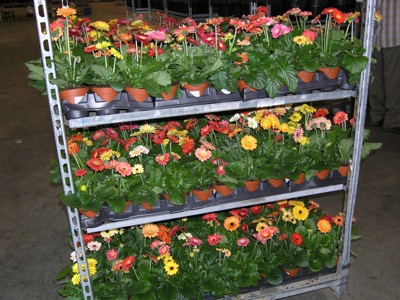
 Oct. 27, 2009 – Scientific studies of “consumption value” explore the
Oct. 27, 2009 – Scientific studies of “consumption value” explore the
reasons consumers choose particular products and provide marketers with
ways to analyze consumer behaviour and influence purchasing.
Oct. 27, 2009 – Scientific studies of “consumption value” explore the reasons consumers choose particular products and provide marketers with ways to analyze consumer behaviour and influence purchasing. Studying the value of consumption is believed to have diagnostic value in the analysis of consumer choice behaviour and, therefore, is helpful in improving the efficiency of the market. To enhance efficiency and promotion, it is essential for marketers to know the consumption value that buyers place on products.

|
|
|
|
Tzu-Fang Yeh and Li-Chun Huang from Da-Yeh University in Changhua, Taiwan, and National Taiwan University, Taipei, Taiwan, recently published a research report in the American Society of Horticultural Science journal, HortTechnology. The study’s objective was to identify the consumption value that consumers seek from floral products, while clarifying the context of these values.
Men and women from three main cities in Taiwan were sampled to represent a population living an urban lifestyle. To compare differences in the consumption values, both genders of consumers from rural areas also participated in the survey. From a consumer survey of 33 questions, 644 valid questionnaires were analyzed.
The researchers discovered that “the statistical results of the analysis revealed that sensory hedonics, emotion conditioning, curiosity fulfilment, monetary worth, and showing care to others were the main types of the consumption values related to floral products.”
“Sensory hedonics,” a phenomenon in which consumers perceive the value of flowers based on touching, smelling, or tasting them, was analyzed using questions such as:
- “Touching flowers can lift up my spirit.”
- “The smell of flowers makes me feel good.”
- “I enjoy food with flowers in the recipe.”
The second value, termed “emotion conditioning,” was indicated through participants’ responses to questions such as, “flowers give me a feeling of peace,” and “flowers make me feel happy.” This value illustrates the interaction between the consumer’s mind and flowers; it describes the emotional side of flower consumption. For example, flowers can condition the consumer’s mind or spirit, and make the consumer feel happy, good, and joyful.
Different consumer groups tended to rate as more important diverse floral consumption values. Female consumers rated values such as emotion conditioning and curiosity fulfilment as stronger influences on their purchasing, while male consumers were more likely to make choices based on sensory hedonics. Consumers from rural areas showed a stronger demand for the values of curiosity fulfilment and monetary worth, while urban consumers favoured emotion-conditioning values when choosing flowers.
Armed with information about values like sensory hedonics and emotion conditioning and their related importance to consumers, retailers can create more effective marketing strategies.
“The implication is that flowers should be marketed to provoke the sensory pleasures of vision, olfaction, and/or texture. Such value adding helps to shape positive experiences, leading to the purchase or use of flowers by consumers,” conclude Huang and Yeh.
The complete study and abstract are available on the ASHS HortTechnology electronic journal website at http://horttech.ashspublications.org/
Print this page